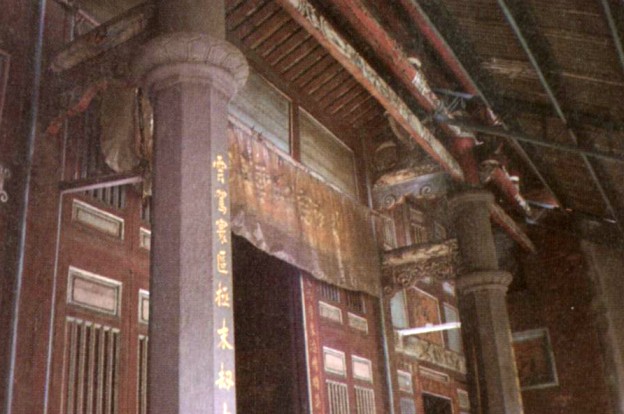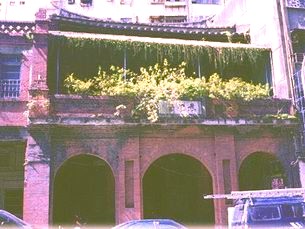Ciyun Temple
Ciyun Temple, the well-known zhaitang (a Buddhist temple with a dining hall) of northern Taiwan, was originally built in 1840, dedicated to the Buddhist goddess Avalokiteshvara (Guanshiyin), whose statuary was brought to Taiwan from Mt. Putuo in the Zhoushan islands of Zhejiang Province. Originally a thatch hut that was later destroyed by floods, it was relocated to the Taipei Basin and rebuilt as a brick structure. As part of city planning during the period of the Japanese colonial rule, ground was filled in outside the city's West Gate. In 1924, Zhang Jialai, the fourth-generation temple director whose Buddhist name was Puru, donated the funds to construct the current zhaitang-style Buddhist temple. It offers a precious world away from the bustling city district in which it is located. This secluded, tranquil temple contains imposing statuary of the Buddhist deities Avalokiteshvara, Sakyamuni and Manjusri. Ciyun Temple


When Ciyun Temple was built, an arched portico of red brick the width of a covered walkway (qilou) was built along the front of the temple and used as a worship hall. The workmanship is precise and beautiful, the structure conforming to rational principles. The building's interior was constructed with steel I-beams, a considerably progressive innovation at that time. The second floor, however, was a completely traditional wooden structure. The northerly room is a shrine for idols, and rooms on both the left and the right were reserved as living quarters, ingeniously combining religious and residential features. In general, the interior of Ciyun Temple has a clearly delineated spatial layout and is simply decorated. It is a rare specimen of Taiwanese temple architecture. On July 11, 2000, Ciyun Temple was designated Taipei City's 97th official historical site.

![Taiwan.gov.tw [ open a new window]](/images/egov.png)
